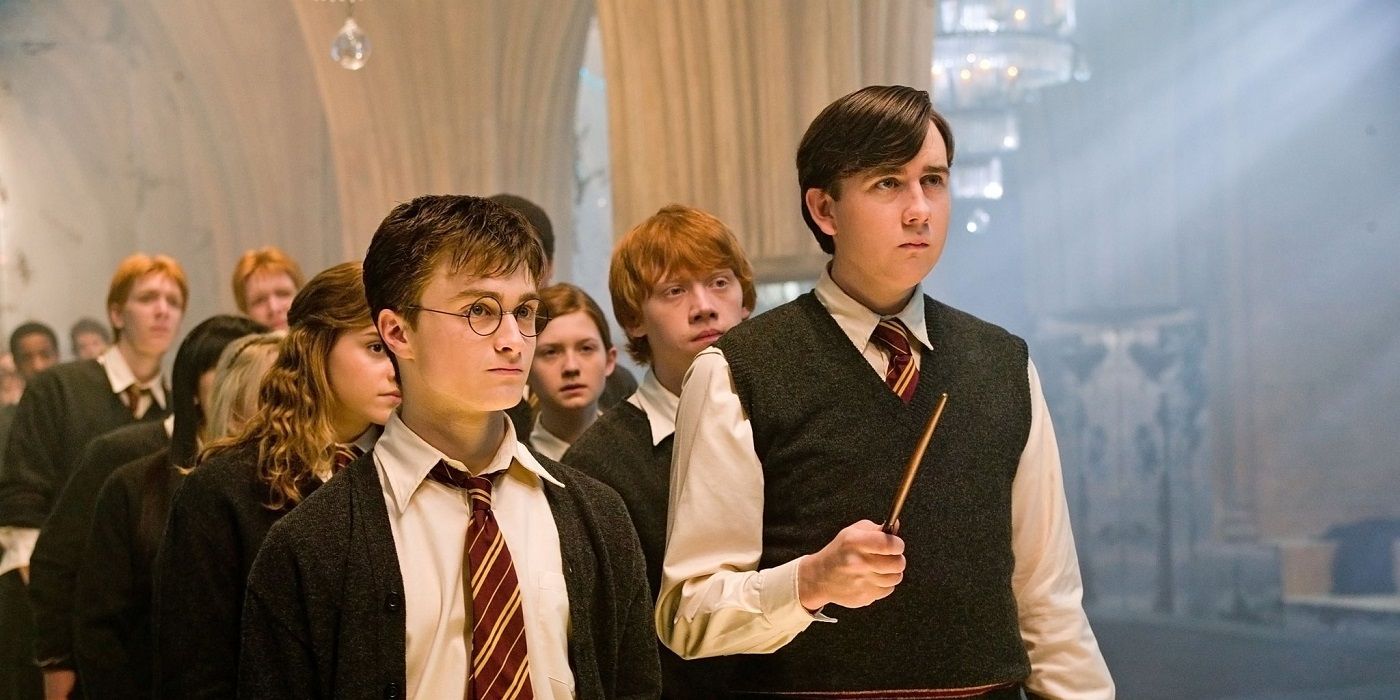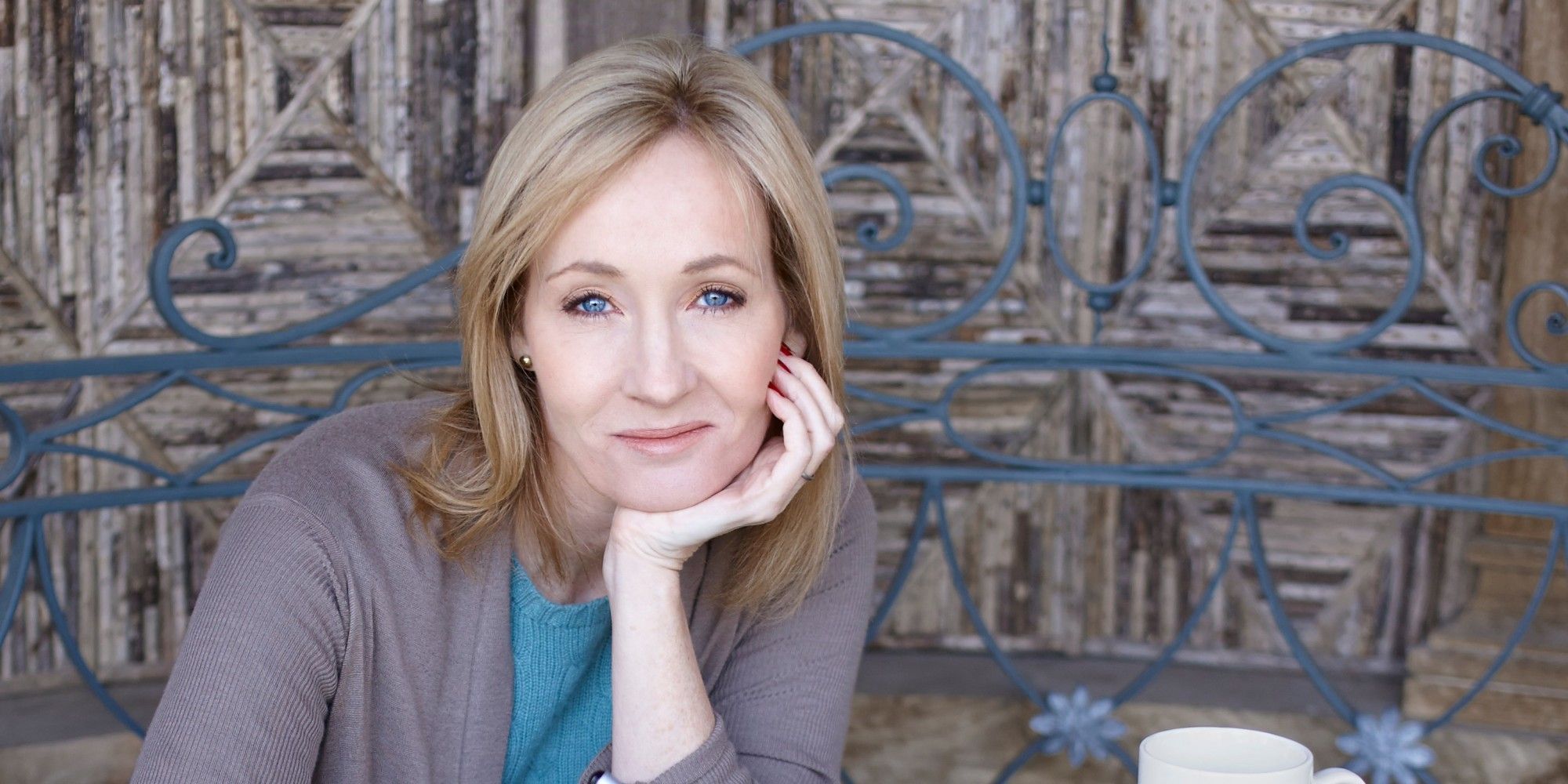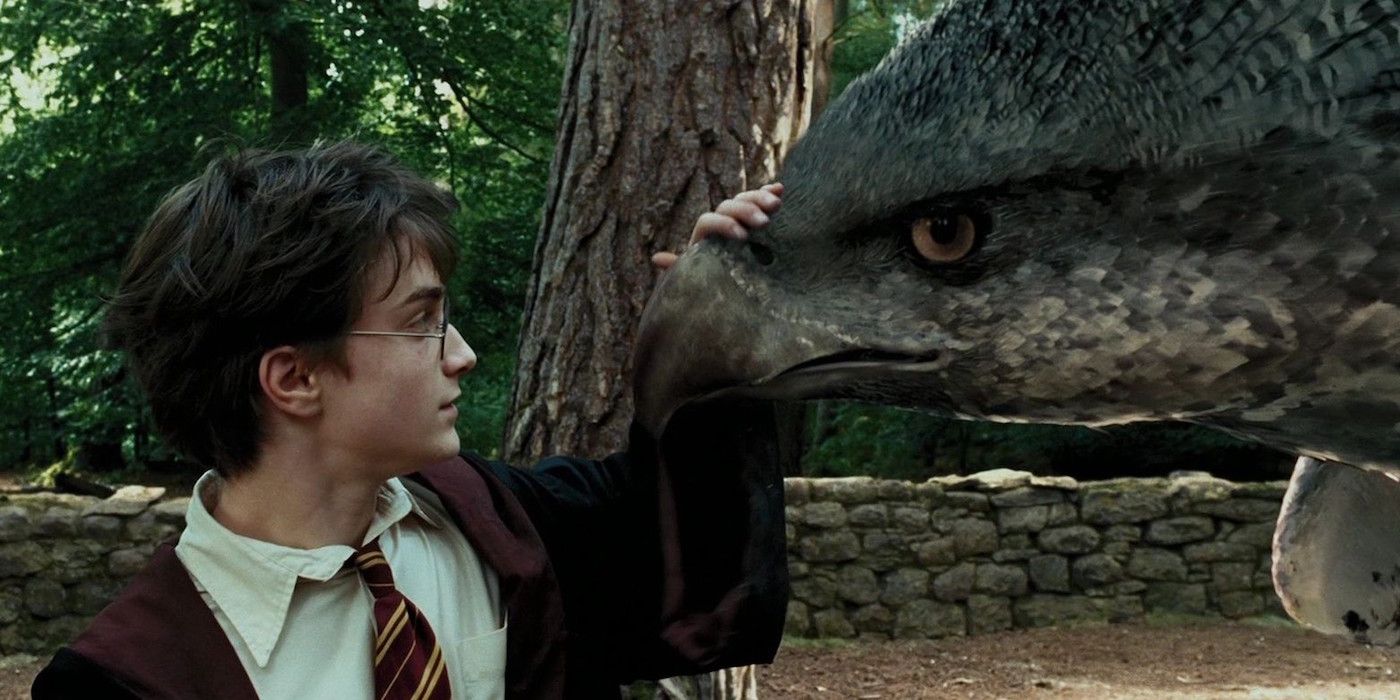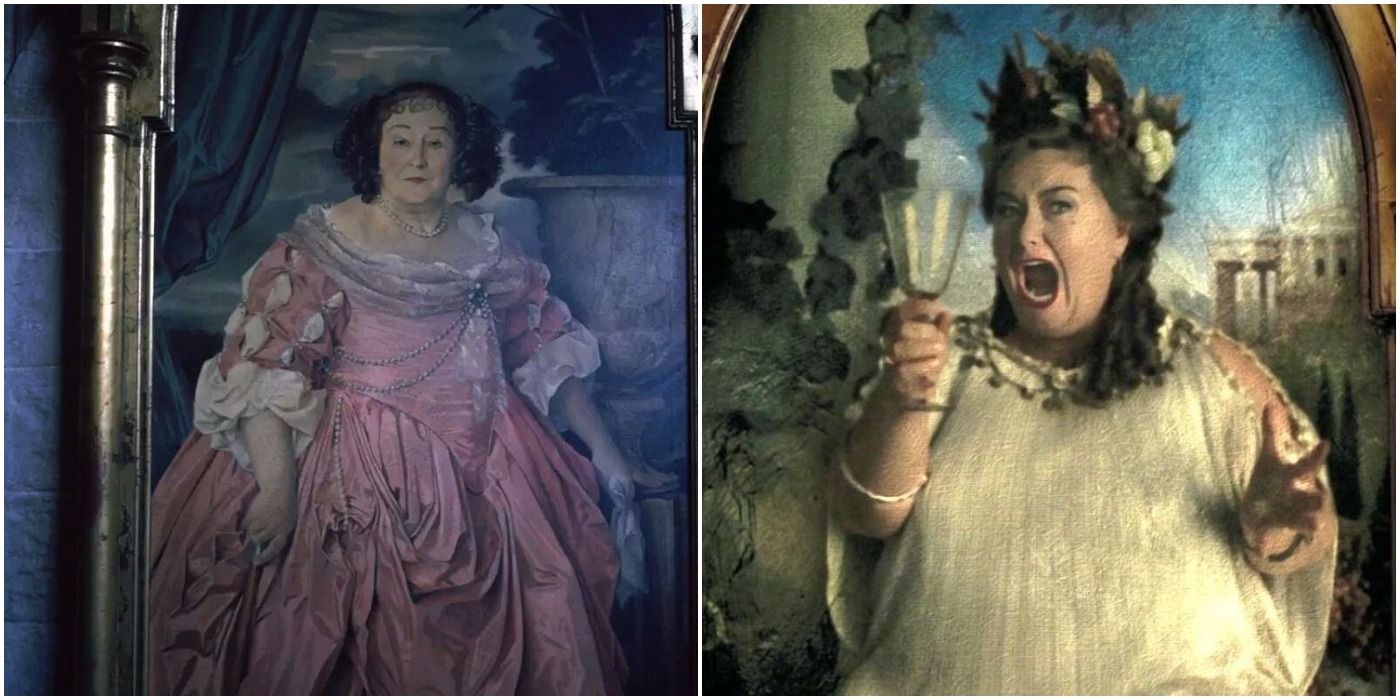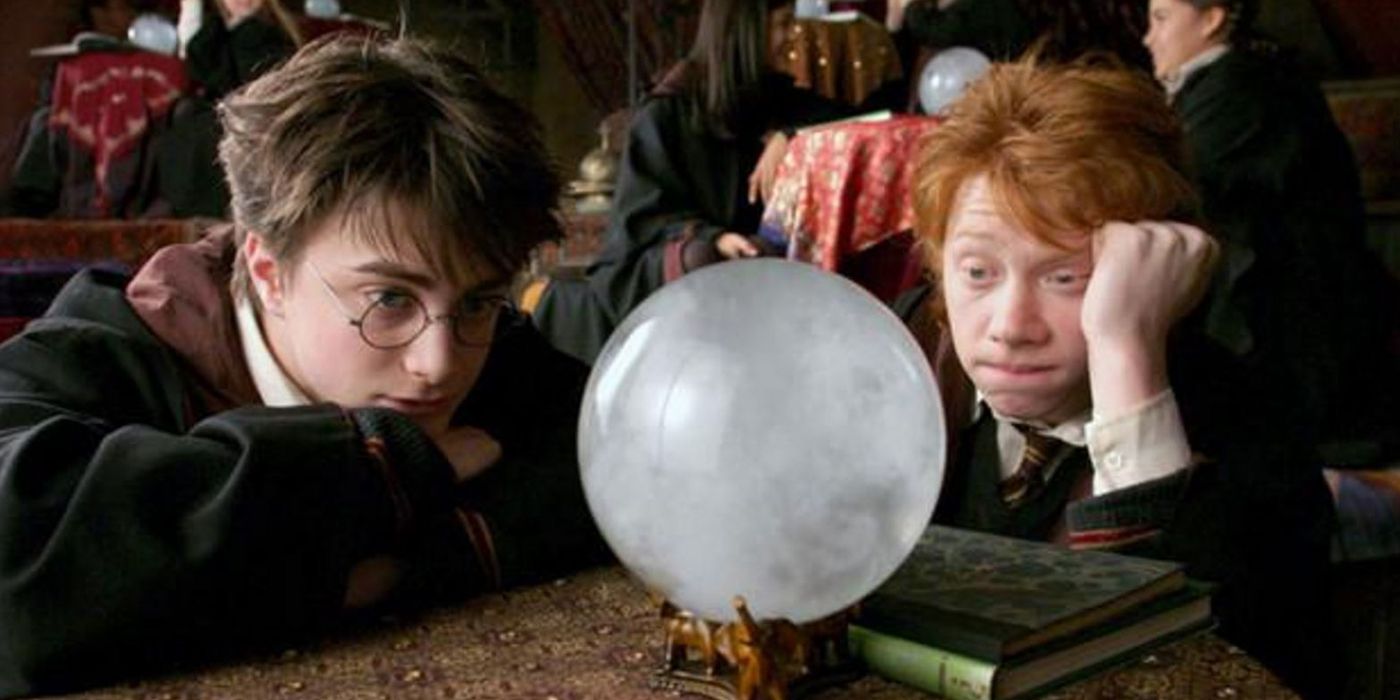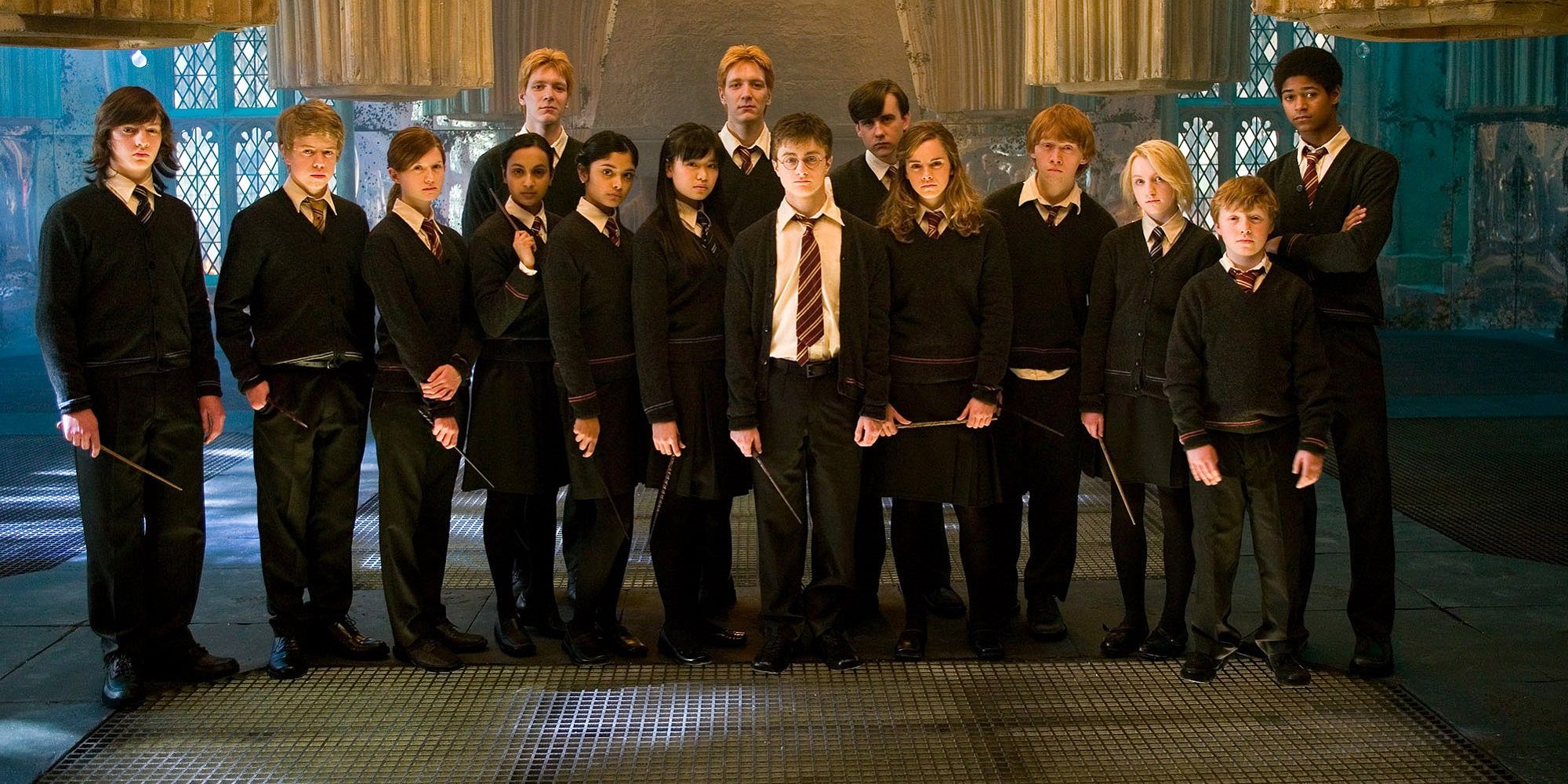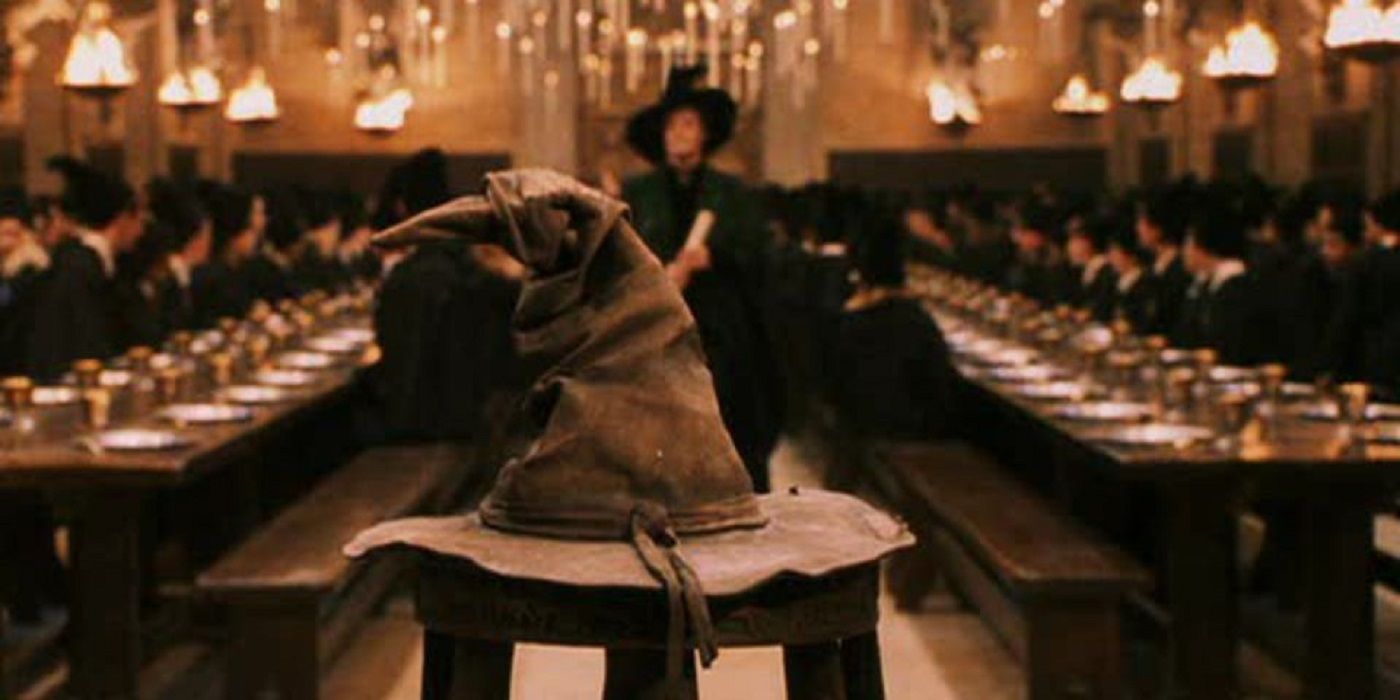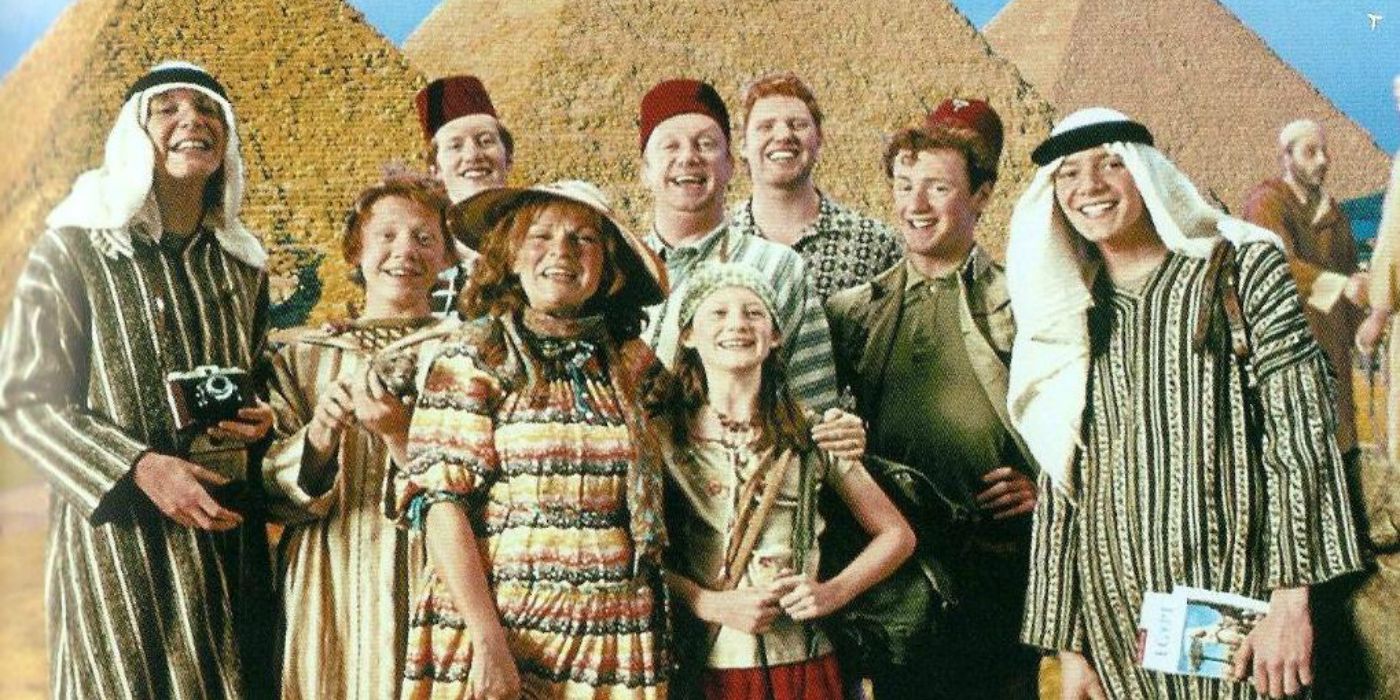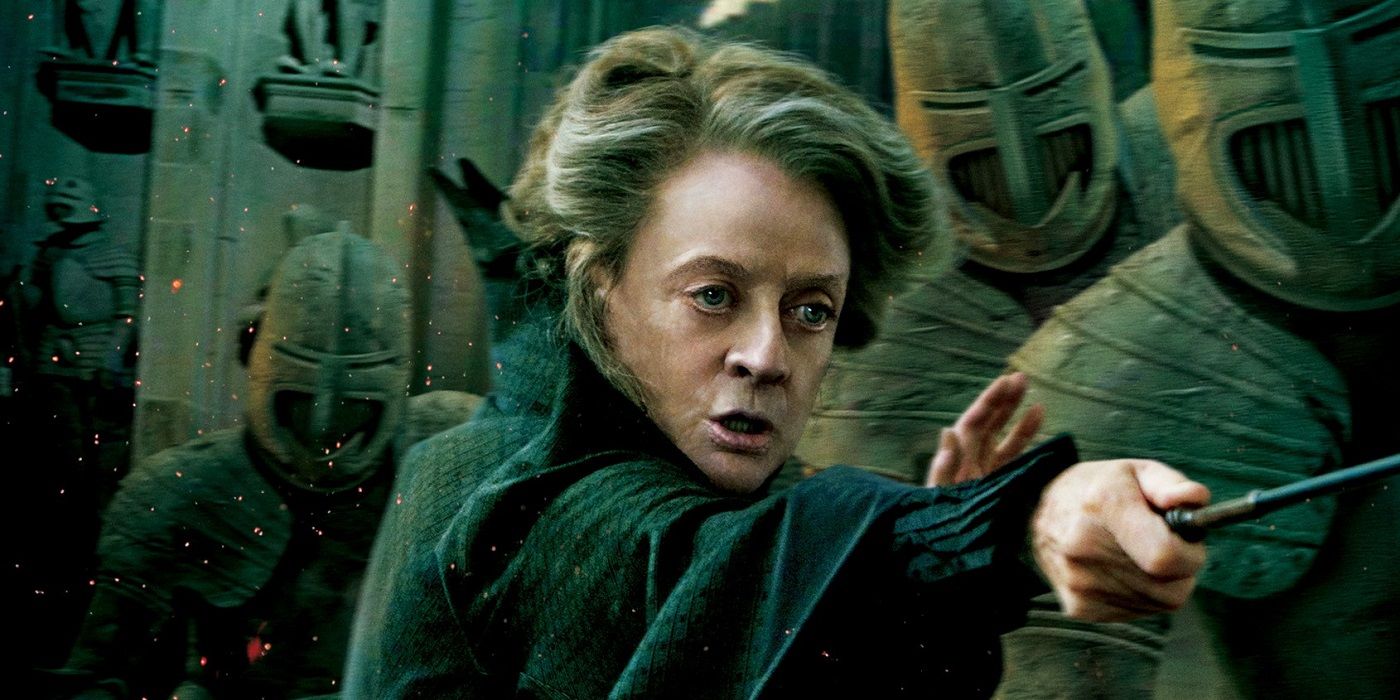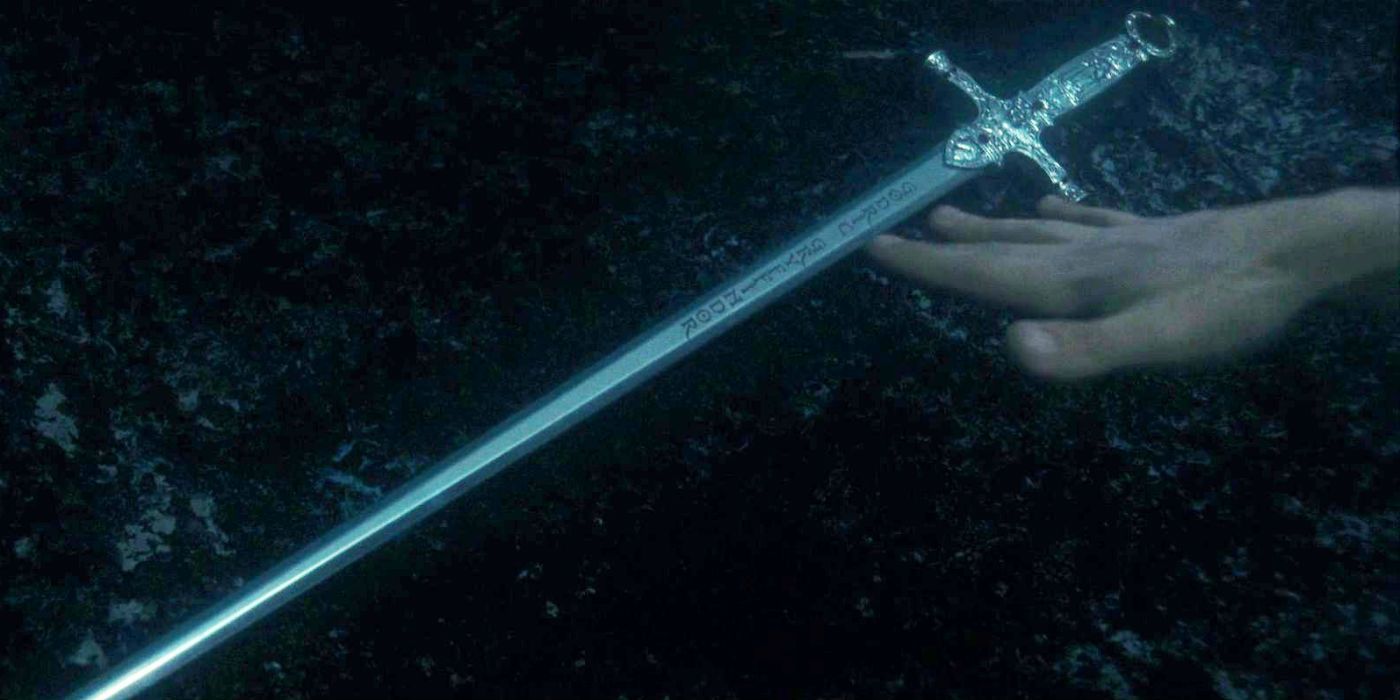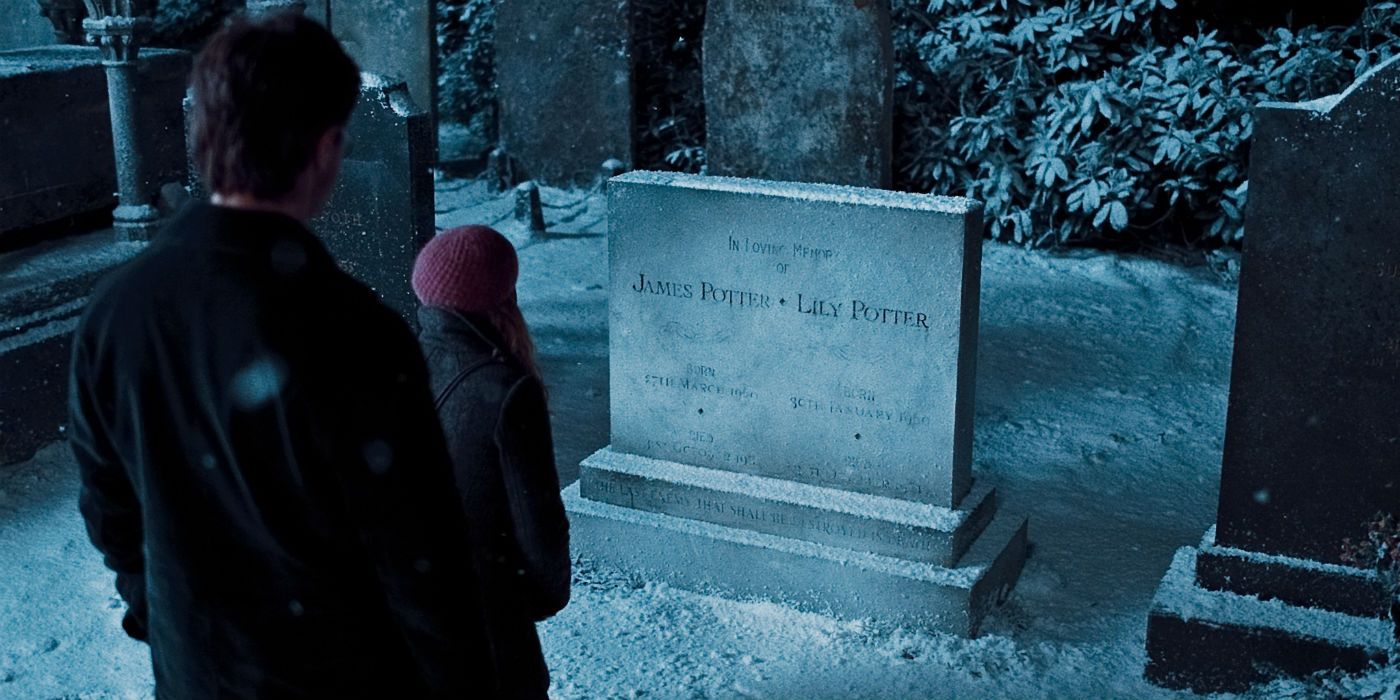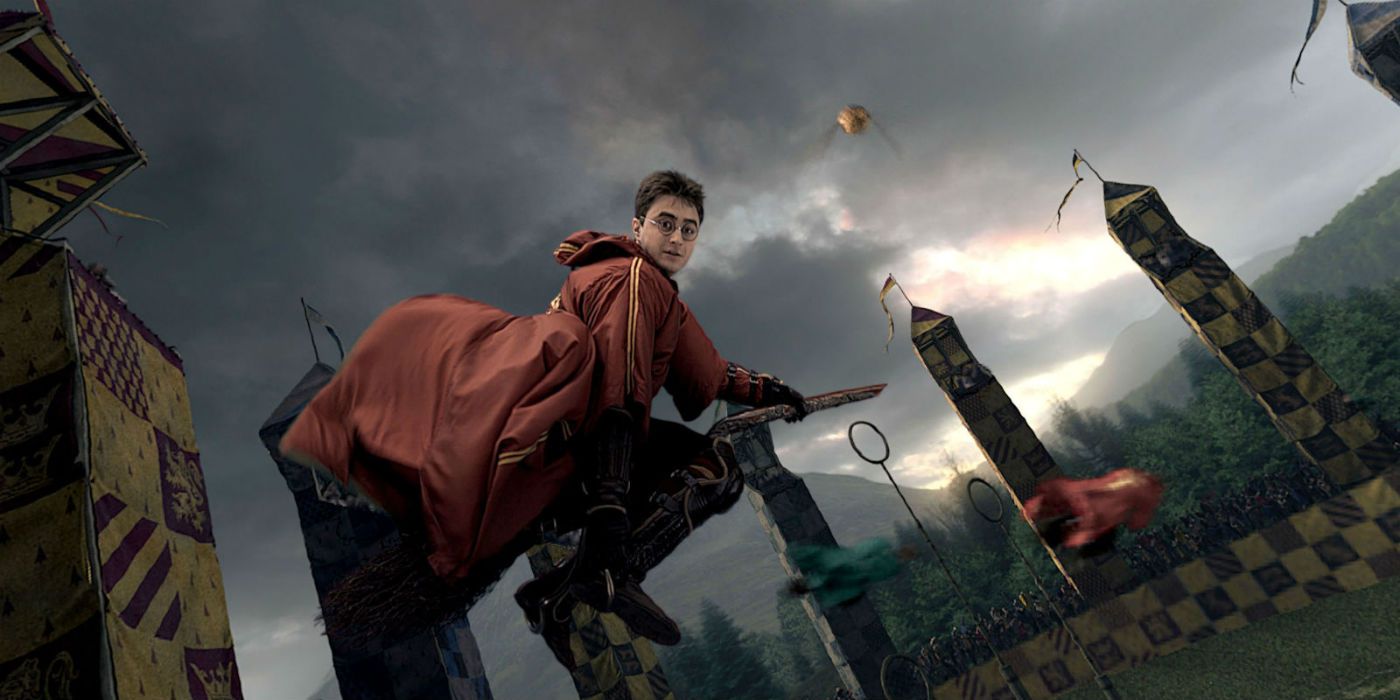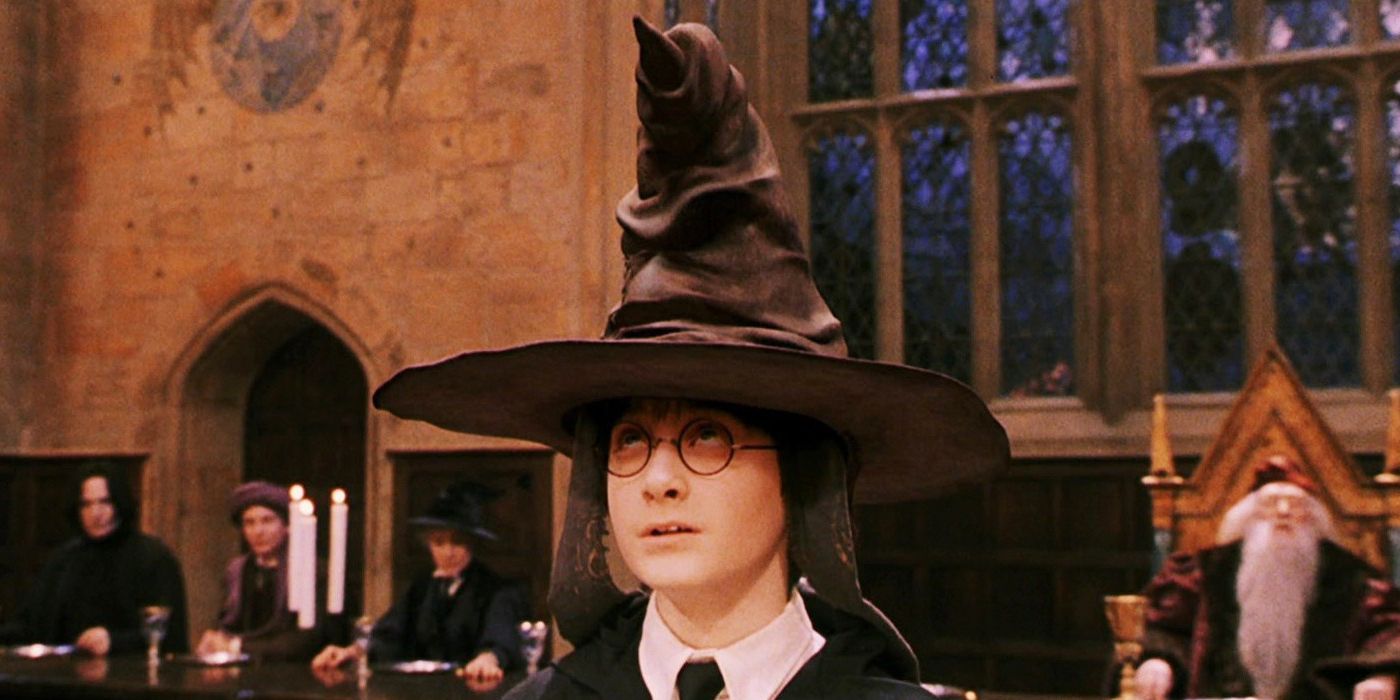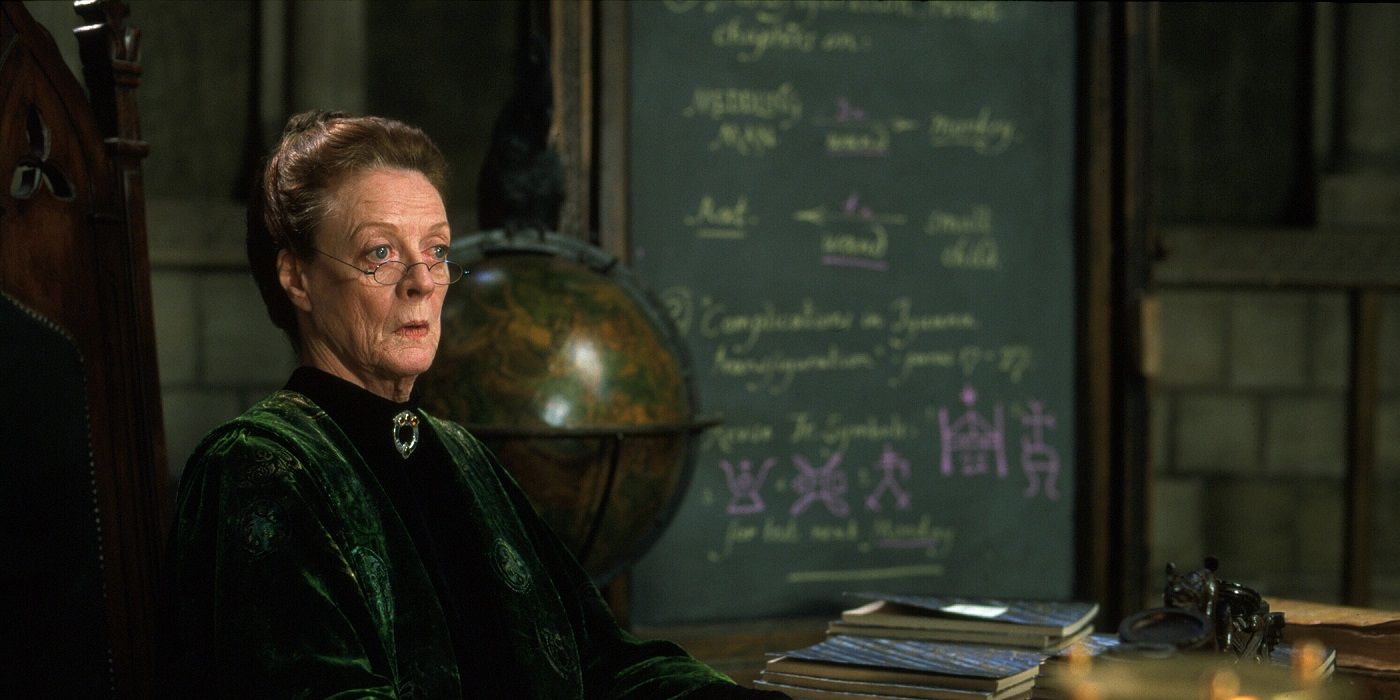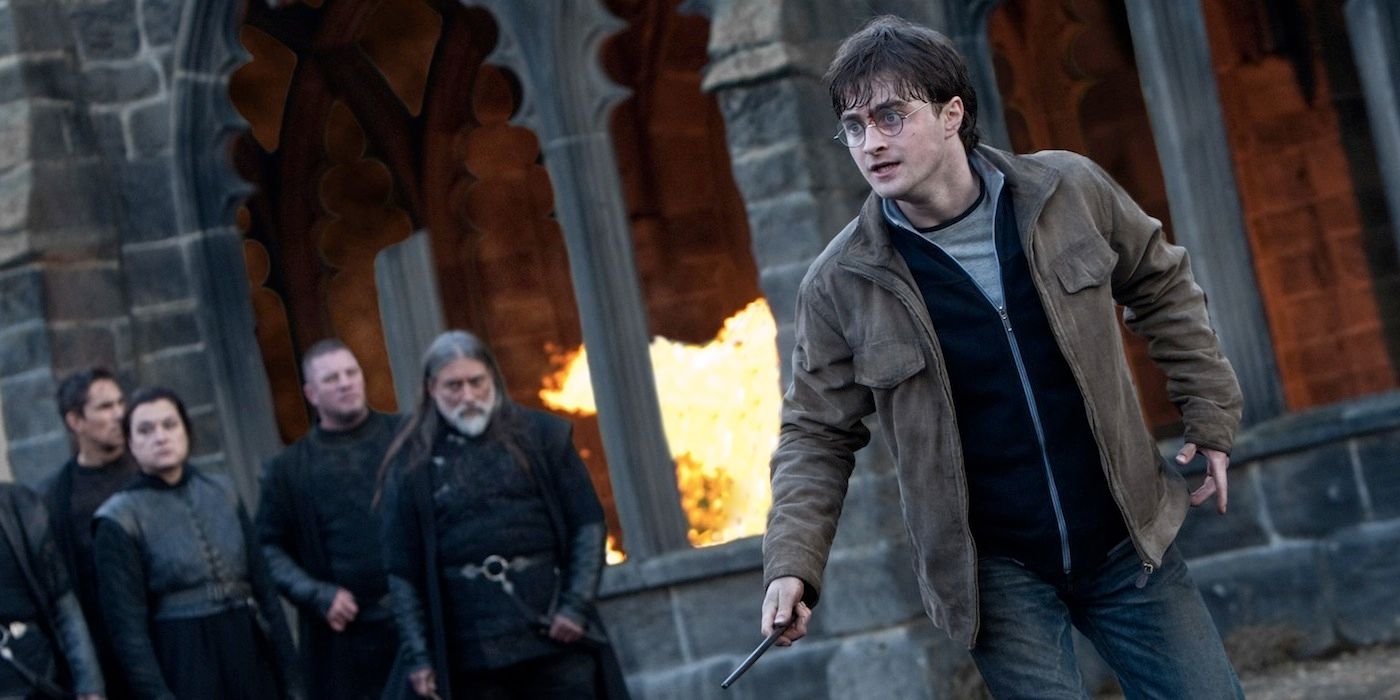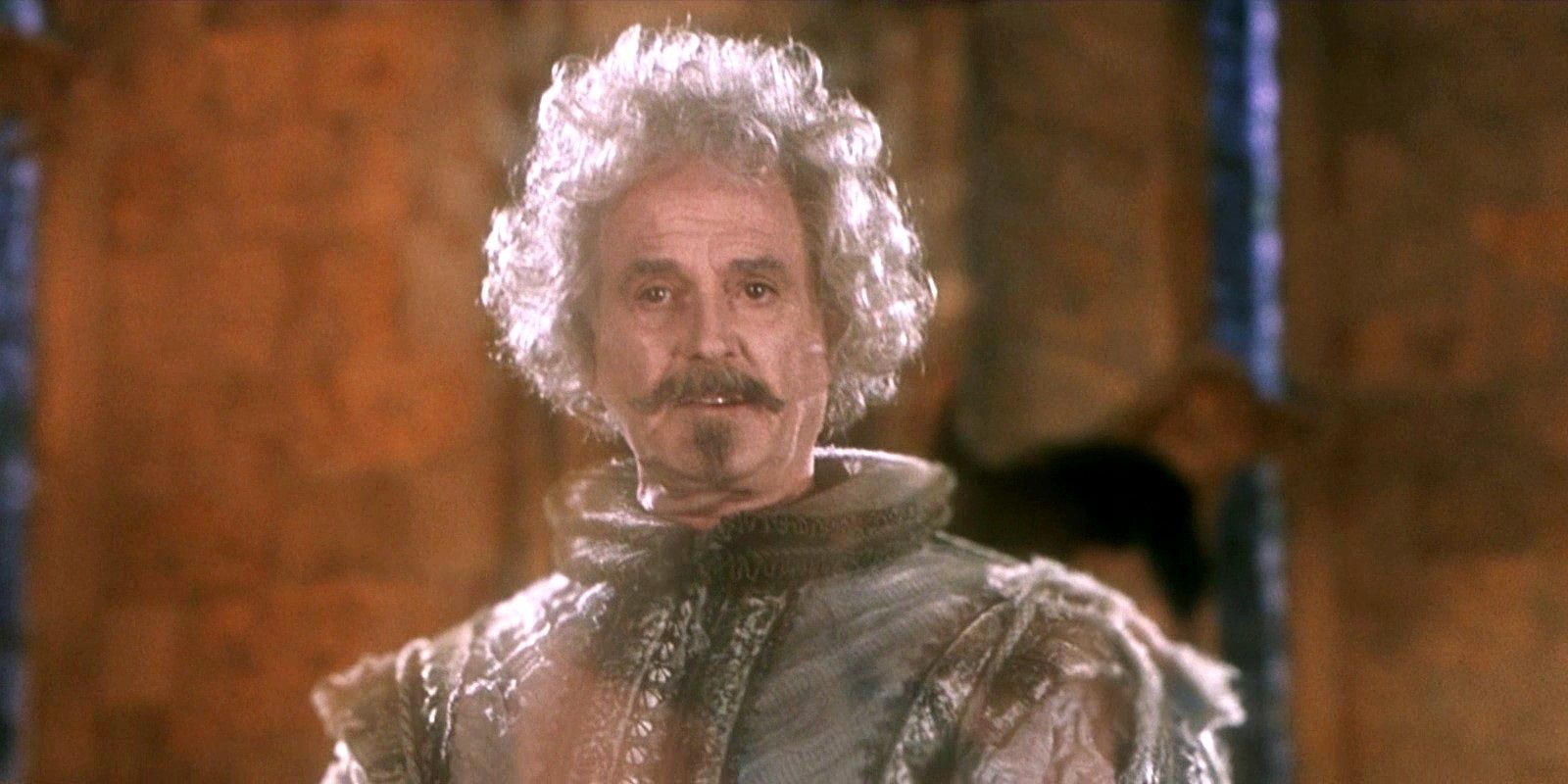With its lion crest and bold red and gold color scheme, Gryffindor is the Hogwarts House for the brave and bold. Upon arrival at Hogwarts, the students who are sorted into Gryffindor are daring, courageous, and, perhaps, a little headstrong.
Of the four Hogwarts Houses, Gryffindor House is the one at the center of the Harry Potter books and movies. After all, Gryffindor is where Harry Potter, along with his friends Ron Wealsey and Hermione Granger, are sorted. One side effect of this focus is that fans of Harry Potter know more about Gryffindor House than the other Hogwarts Houses (for example, less is known about the secretive Slytherin House). The Common Room and dormitories, the Quidditch team, the history, and famous Gryffindors are all woven into the narrative. These facts, pulled from across Rowling's expansive canon, include facts about the Founder, the House, and prominent members of Gryffindor.
Here are the 15 Things You Didn't Know About House Gryffindor:
15. J. K. Rowling is a Gryffindor
Author J. K. Rowling was mum which Hogwarts House she was in for years. It wasn't until 2012 that she revealed during a webchat session that she had taken the Pottermore quiz and had been sorted... into Gryffindor! Rowling is in good company in Gryffindor, too - a number of the actors from the Harry Potter movies have also joined her. These include Evanna Lynch (who plays Luna Lovegood), Bonnie Wright (Ginny Weasley), Katie Leung (Cho Chang), and even Tom Felton (Draco Malfoy)!
It may not seem surprising that Rowling is the same House as her beloved main characters (after all, she has said that she based Hermione partly on her younger self), but Rowling was actually surprised. Rowling has said that she has a soft spot for Hufflepuff House and greatly admires Hufflepuffs. Her daughter once told her that everyone should aspire to be loyal and trustworthy like a Hufflepuff, and Rowling agreed.
14. "Gryffindor" comes from the French "Gryphon D'Or"
The name "Gryffindor" might just sound like a made-up word, especially since it is introduced alongside the word "Hufflepuff". Many fans probably recognize that "Gryffin" comes from the "griffin", a mythical creature with the body of a lion but the head and wings of an eagle. But the "-dor" of Gryffindor also has significance. First, "dor" could come from the Greek word for "gift", which would make "Gryffindor" loosely translate to "the gift of the griffin".
Much like "Slytherin" is a spelling variation on the phrase "slither in" (the movement of a snake), "Gryffindor" is a spelling variation on the French "Gryphon d'or". The phrase, "Gryphon d'or" translates to the "golden griffin". The golden griffin was a symbol used in heraldry, and was often used to describe a winged lion (that is, a griffin that had the body and head of a lion, but the wings of an eagle). Gryffindor's own crest, a golden lion rampart, is only missing a pair of wings to be a gryphon d'or.
13. Fat Lady faces many... adaptions
The Fat Lady is the colloquial name of the enchanted portrait of a once-living member of Gryffindor House who guards the Gryffindor Common Room. Students must give the Fat Lady the correct password to get into the Common Room. In the books, the Fat Lady is a pretty consistent character, although she does have a hiatus after Sirius Black attacks her painting.
But, in other media, the Fat Lady and how she is portrayed varies quite a bit.First, the Fat Lady only has credited appearances in two Harry Potter films. In Harry Potter and the Sorcerer's Stone (2001), she is played by Elizabeth Spriggs. Dressed in a large pink dress, she is sober and proper. In Harry Potter and the Prisoner of Azkaban (2004), the Fat Lady is played by Dawn French. She is silly, loud, dressed in a toga, and sings high-pitch opera. In the video game of The Prisoner of Azkaban, she is referred to as "The Pink Lady", which confusingly seems more representative of her Sorcerer's Stone portrayal.
12. Transforming Stairs Date Back to the Founders
In the book series, the Gryffindor's common room has two sets of stairs: one leads up to the dormitory rooms for girls and the other goes to the dormitory rooms for boys. If a boy tries to walk up the stairs to the girls' dormitories, it transforms into a smooth slide and a blaring alarm sounds - in the case of Harry and Ron, this leads to a group of Gryffindor girls to laugh at them after they try to go up the stairs to find Hermione.
The same is not true for the stairs to the boys' dormitories. Hogwarts: A History reveals that the Founders only charmed the stairs to the girls' dormitories; girls could come and go as they pleased up and down the boys' stairs. This was because the four Founders believed that girls were more trustworthy than boys. It is likely but not confirmed that the other Hogwarts Houses also have similar enchantments.
11. Godric Gryffindor was an Advocate for Muggle-born Wizards
Over a thousand years ago, the Hogwarts Founders debated whether or not Muggle-born students had a place at Hogwarts. Godric Gryffindor was passionately in favor of Muggle-born children being allowed to attend Hogwarts, and he fought for their place at the school. Godric Gryffindor had been good friends with Salazar Slytherin, but Salazar Slytherin believed that Muggles should be banned from Hogwarts and that wizard blood should be kept pure. Their difference of opinions was so strong that it destroyed their friendship. Helga Hufflepuff and Rowena Ravenclaw sided with Godric Gryffindor, and so Muggle-born students were allowed to attend Hogwarts. Slytherin (unbeknownst to the other Founders) created the Chamber of Secrets and left Hogwarts soon after, never to return.
Beyond Hogwarts, it appears that Godric Gryffindor was also a champion for Muggle-born wizards. When Godric Gryffindor was named "Wizard of the Month" by J. K. Rowling in July 2007, she wrote that he was "an enlightened fighter against Muggle-discrimination".
10. The Sorting Hat Started Out as Godric's Fashion Accessory
The Sorting Hat has decided the fates of Hogwarts students for a thousand years. Technically, the Hat has not sorted students since Hogwarts' inception; it was only after the school had already been founded that the Founders realized that they wouldn't be around to sort students forever. The hat uses legilimency, the magical act of interpreting a person's mind, the same power that Queenie Goldstein uses in Fantastic Beasts and Where to Find Them (2016).
While all four Founders, Helga Hufflepuff, Rowena Ravenclaw, Salazar Slytherin, and Godric Gryffindor, had a hand in the hat's creation, its original owner was Godric Gryffindor. In fact, before the hat was used to sort wizards and witches into Houses, it was a normal hat that sat on Godric Gryffindor's head.The Sorting Hat's song also identifies Gryffindor as the person who came up with the idea of creating a Sorting Hat. The Hat sings:
’Twas Gryffindor who found the way,
He whipped me off his head
The founders put some brains in me
So I could choose instead!
9. Are Weasleys (and Potters) Always in Gryffindor?
Ron tells Harry in Harry Potter and the Sorcerer's Stone that everyone from his family is in Gryffindor. However, it's unclear if Ron is talking about his immediate family or longer. It is true that Arthur Weasley met his wife Molly Weasley (née Prewett) when they were both members of Gryffindor House at Hogwarts. It is also true that all of their seven children - Bill, Charlie, Percy, Fred, George, Ron, and Ginny - were sorted into Gryffindor. Rose Granger-Weasley, Ron's daughter, is also later sorted into Gryffindor. But, beyond that, we don't know if the Weasley relatives were sorted into Gryffindor or if Ron is simply being hyperbolic. After all, he is worried that he won't get into Gryffindor... and the Sorting Hat does not seem to be genetically based in its decision-making.
Ron has at least one close relative that was not in Gryffindor. The only one of Ron's grandparents is confirmed to have been sorted into a specific Hogwarts House: Cedrella Black was a member of Slytherin House.
The Potters, too, have a reputation of being in Gryffindor. Albus Severus Potter was the first Potter to be sorted into Slytherin, much to the chagrin of his father.
8. Gryffindors are talented transfigurers
Members of Gryffindor are often good at transfiguration. The current Head of Gryffindor House, Prof. McGonagall, is the transfiguration professor and an animagus, able to transform herself into a cat at will. Additionally, Headmaster Albus Dumbledore (who was long ago sorted into Gryffindor House) was the transfiguration professor before her. Other Gryffindors have also been keen about transfiguration. Harry Potter's father, James Potter, along with his friends Peter Pettigrew and Sirius Black, were all members of Gryffindor and became gifted animagi during their time at Hogwarts. Once a month, the so-called Marauders would transform into their animal forms to be companions to their friend Remus Lupin when he transformed into a werewolf.
The one exception to this appears to be Neville Longbottom, who struggled with transfiguration, but excelled at herbology. Neville has often been the odd man out in Gryffindor, however, so he seems more like the exception that makes the rule.
7. Gryffindor's Sword has caused a lot of strife
Godric Gryffindor was a renowned dueller (both with a wand and with a sword). Rowling has written on her website Pottermore that it was considered unsporting for a wizard to fight a Muggle with a wand, and so wizards would use swords when duelling with Muggles.Over a thousand years later, the sword that bears Godric Gryffindor's name became of great use to Harry Potter and his allies. The sword held a charmed power that allowed it to destroy Voldemort's Horcruxes. Neville Longbottom, for instance, uses the sword to kill Nagini, Voldemort's pet snake and the final Horcrux.
The sword, however, has a troubled history. While wizards claim that the sword was made for Gryffindor by the Goblin King Ragnuk the First and then the goblins coveted it after Gryffindor had paid for it fair and square, goblins claim that Gryffindor stole it from the Goblin King. When goblins attacked Gryffindor to retrieve the sword, he bewitched them and sent them back to Ragnuk with a message: next time, he would use the sword. Rowling seems to side with the wizards, saying that it is a "false legend" that the goblins created... but perhaps Rowling is biased as a witch herself.
6. Godric's Hollow Has Been the Home of Many Wizards
Godric's Hollow was the home of Godric Gryffindor and now bears his name. It is a majority wizard village, but still has some Muggle residences (Rowling revealed that Hogsmeade is actually the only wizard-only village in the United Kingdom; all other wizards live among Muggles to some degree or another). Over the centuries, Godric's Hollow has been the home to many prominent wizards, including Bowman Wright, the creator of the Snitch, the Dumbledore family, and the Potters.It is also the place of great loss and strife for both Albus Dumbledore and Harry Potter. In Godric's Hollow, a three-man duel between Albus, his brother Aberforth, and the dark wizard Gellert Grindelwald, ended in the accidental death of Albus and Aberforth's sister, Ariana. The brothers were never sure which wizard fired the hex that killed Ariana, and this haunted Albus until his own death.
In Harry's case, Godric's Hollow was meant to be a safe haven for his parents from Voldemort. However, Peter Pettigrew betrayed Harry's parents, and Voldemort sought them out and killed them. Harry survived that fateful night, however, beginning the journey that is chronicled over the course of the series. A memorial to his parents now stands in Godric's Hollow, with a charm that makes it only visible to wizards and witches.
5. Gryffindor is the House of Fire
J. K. Rowling has stated that each of the four Hogwarts Houses is associated with the four elements. Gryffindor is fire, while Slytherin is water, Hufflepuff is earth, and Ravenclaw is air. Fire is a fitting element for Gryffindor, especially given the House's color scheme of red and gold (the other House's colors are arguably less reflective of the "typical" colors that would be associated with their elements). Gryffindors, while brave, can also have fiery tempers. Finally, fire is often understood in opposition to water, so positioning Gryffindors as fire against Slytherin's water helps to cement the relationship between the two Houses. While it is clear that Gryffindor (and the other Hogwarts Houses) has grown to be much more complex and vibrant of an identity than a simple element, its root as one of four essential elements does help to provide some clarity of Rowling's process in developing the world of Harry Potter.
4. Gryffindor Often Causes "Hatstalls"
On her website, Pottermore, J. K. Rowling has written about "Hatstalls", or times when the Sorting Hat is stumped for longer than five minutes. She notes that this is very uncommon, and might only happen once every fifty or so years. The Hatstalls that Rowling reveals in the Pottermore post are Peter Pettigrew (the Hat was caught between Gryffindor and Slytherin) and Minerva McGonagall (the Hat couldn't decide between Gryffindor and Ravenclaw). In Harry's year, the two students closest to qualifying as a Hatstall were Hermione (split between Gryffindor and Ravenclaw) and Neville Longbottom (split between Gryffindor and Hufflepuff).
There was a fan theory that Gryffindor House only admitted students who were brave enough to "choose" it, much like Harry chooses Gryffindor House over Slytherin. While the Hatstalls post that Rowling wrote disproves this theory (even going as far to say that Neville tried to convince the Hat to put him in Hufflepuff), it's clear that Gryffindor attracts a lot of different kinds of people and is at the center of many difficult decisions for the Sorting Hat.
3. Professor McGonagall and Flitwick could have traded places
Professor McGonagall, the stern transfiguration professor, is the Head of Gryffindor House, while Professor Flitwick, the charms professor, is the Head of Ravenclaw House. But, just as McGonagall could have ended up in Ravenclaw, Flitwick also caused the Sorting Hat some pause (although not enough to merit a "Hatstall"). The Sorting Hat could not decide between Gryffindor and Ravenclaw for Flitwick, but finally settled on placing him in Ravenclaw.
Rowling has written on Pottermore that McGonagall and Flitwick were good friends and had mused together about how their lives would be different if McGonagall had been put in Ravenclaw and Flitwick in Gryffindor. Perhaps, if the Sorting Hat had made a different choice, their roles would be reversed and they would have traded places as Head of Gryffindor and Ravenclaw.
Still, after her amazing displays of courage in the face of Death Eaters, it's hard to imagine Professor McGonagall anywhere but Gryffindor...
2. Godric Gryffindor Is the Only Founder Without Known Descendents
There were some fan theories which proposed that Godric Gryffindor was related to Harry Potter, but Rowling has denied these speculations. As of right now, there are no known descendents of Godric Gryffindor. Salazar Slytherin's descendents include Tom Riddle (otherwise known as Lord Voldemort); Slytherin is also distantly related to Harry Potter through the Peverell brothers, although it is not clear if they are blood relatives. Hepzibah Smith (and perhaps the Hufflepuff student Zacharias Smith) is a descendent of Helga Hufflepuff. Rowena Ravenclaw's family tree does not fair much better than Gryffindor's. Her only known descendent is her daughter Helena Ravenclaw, who became the "Grey Lady" (the ghost of Ravenclaw House).
Rowling once joked that given Godric Gryffindor's transfiguration abilities, perhaps he was still alive as the giant squid in the lake outside of Hogwarts. If that were true, Godric Gryffindor would be the oldest and largest animagus of all time.
1. Nearly Headless Nick was executed for a strange reason
Sir Nicholas de Mimsy-Porpington, more colloqiually known as "Nearly Headless Nick", is the Gryffindor House Ghost. Nick, who is played by John Cleese in Harry Potter and the Sorcerer's Stone (2001), gets his nickname from the grisly way that he died in 1492. But why Nick was put to death is less known than how he was put to death.
In the first draft of Harry Potter and the Chamber of Secrets, Rowling wrote a song about Nick's beheading which he sang at his 500th Deathday party. He tried to use magic to straighten the teeth of a noblewoman named Lady Grieve, but it backfired and she grew tusks. As punishment, Nick became nearly headless. The song includes the lines:
Alas for the eve when I met Lady Grieve
A-strolling the park in the dusk!
She was of the belief I could straighten her teeth
Next moment she'd sprouted a tusk.
But, just like Nick's head, the song got cut; Rowling's editor wasn't a fan of the multiple stanzas about the events leading to Nick's demise.
---
Are there some facts about Gryffindor that we didn't know? Tell us in the comments!

